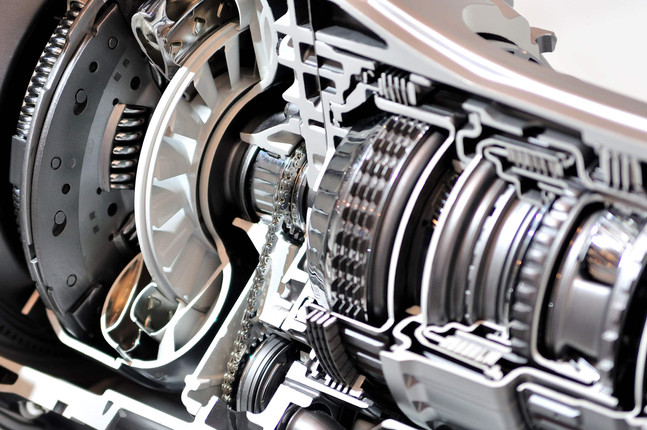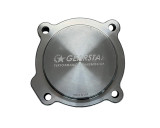The Rise of Hybrid High-Performance Transmissions
The rise of hybrid high-performance transmissions marks a significant evolution in the automotive industry, combining power, performance, and environmental consciousness.
The automotive industry has witnessed a remarkable shift in recent years, with a growing emphasis on sustainability and efficiency. As a result, hybrid technology has become increasingly prevalent, not only in everyday commuter cars but also in high-performance vehicles. Hybrid high-performance transmissions have emerged as a prominent solution, offering a unique combination of power, performance, and environmental consciousness. This rise of hybrid high-performance transmissions marks a significant evolution in the world of sports cars and performance-oriented vehicles. Let's explore the factors driving this trend and the benefits it brings to the automotive landscape.
Environmental Consciousness:
With an increasing focus on reducing carbon emissions and promoting eco-friendly transportation, automakers are compelled to develop more sustainable solutions for high-performance vehicles. Hybrid high-performance transmissions are at the forefront of this green revolution, as they combine internal combustion engines with electric motors to reduce fuel consumption and emissions. By adopting this technology, high-performance car manufacturers demonstrate their commitment to environmental responsibility and sustainability.
Electric Torque and Instantaneous Power:
Electric motors used in hybrid high-performance transmissions provide instantaneous torque, delivering immediate power to the wheels. This characteristic is particularly advantageous during acceleration and in low-speed driving situations. By complementing the internal combustion engine's power with electric torque, hybrid high-performance vehicles can achieve impressive acceleration times and enhance overall performance.
Regenerative Braking:
Hybrid high-performance transmissions often incorporate regenerative braking systems. When the vehicle decelerates or brakes, the electric motor functions as a generator, converting kinetic energy into electrical energy. This reclaimed energy is stored in the vehicle's battery pack, which can then be used to power the electric motor during subsequent acceleration phases. Regenerative braking not only improves overall efficiency but also extends the vehicle's electric-only range.
All-Wheel Drive Capabilities:
Many hybrid high-performance transmissions feature all-wheel-drive capabilities, thanks to the integration of electric motors on the front and/or rear axles. This arrangement allows for torque vectoring, precise power distribution between the wheels, and enhanced traction, contributing to improved handling and stability, especially in challenging driving conditions or during spirited driving.
Boost Functionality:
Hybrid high-performance transmissions often come equipped with a "boost" function, allowing drivers to access additional power during specific driving scenarios. When needed, the electric motor supplements the internal combustion engine, providing an extra surge of power for overtaking, track driving, or quick acceleration. This boost functionality enhances the driving experience and can lead to exhilarating performance gains.
Efficiency and Fuel Economy:
Hybrid technology's primary objective is to enhance fuel efficiency, and hybrid high-performance transmissions are no exception. The combination of electric power and internal combustion engines allows for optimized power delivery, reducing fuel consumption and emissions during regular driving conditions. This efficiency benefits not only the environment but also the driver's wallet in terms of reduced fuel costs.
Adaptive Driving Modes:
Hybrid high-performance transmissions often come equipped with adaptive driving modes, allowing drivers to customize their driving experience based on their preferences and driving conditions. Modes may include eco-friendly settings for urban commuting, sporty modes for spirited driving, and comfort modes for relaxed cruising. These customizable settings provide a versatile driving experience tailored to individual preferences.
Future-Proofing:
As the automotive industry moves toward electrification and stricter emission regulations, hybrid high-performance transmissions offer a bridge between traditional internal combustion engines and fully electric vehicles. This future-proofing strategy enables automakers to remain competitive in a rapidly evolving market while still catering to enthusiasts' desire for high-performance driving experiences.
High-performance transmissions play a pivotal role in enhancing the driving experience of enthusiasts and sports car owners. These specialized transmissions are available at reputable shops like Gearstar, where they are meticulously crafted to meet the unique demands of each application. Recognizing that every performance application is distinct and each customer has specific needs, Gearstar ensures that a single skilled builder is dedicated to crafting the transmission for each project. This personalized approach allows the builder to have an in-depth understanding of both the transmission and the specific project requirements, ensuring that they are kept in mind at every stage of the manufacturing process. The result is a finely-tailored, high-performance transmission that aligns precisely with the customer's performance goals, delivering optimal performance and driving pleasure. With Gearstar's commitment to excellence and customization, customers can trust that their custom-built transmission will perfectly complement their high-performance vehicle, elevating their driving experience to new heights.
Conclusion:
In conclusion, the emergence of hybrid high-performance transmissions represents a significant step forward in the automotive industry's pursuit of sustainability and efficiency. With a growing focus on reducing carbon emissions and promoting eco-friendly transportation, hybrid technology has become increasingly prevalent in both everyday commuter cars and high-performance vehicles. By seamlessly integrating internal combustion engines with electric motors, hybrid high-performance transmissions offer a unique combination of power, performance, and environmental consciousness.
The adoption of hybrid high-performance transmissions allows sports car enthusiasts and performance-oriented drivers to enjoy exhilarating driving experiences without compromising their commitment to environmental responsibility. The instantaneous torque provided by electric motors enhances acceleration and low-speed performance, while regenerative braking systems reclaim kinetic energy to extend the electric-only range and improve overall efficiency.
As technology continues to advance, we can anticipate further enhancements in hybrid high-performance transmissions, leading to even more impressive performance gains and refined driving dynamics. Automakers and transmission specialists are likely to explore new innovations and optimize the synergy between internal combustion engines and electric motors, pushing the boundaries of high-performance driving while reducing the environmental impact.
The rise of hybrid high-performance transmissions represents a promising future for the automotive landscape, where power and performance can coexist harmoniously with environmental consciousness. As hybrid technology continues to mature, it will undoubtedly play a pivotal role in shaping a more sustainable and exciting automotive future for enthusiasts around the world. With each advancement in hybrid high-performance transmissions, we move closer to achieving the perfect balance between performance and environmental responsibility, allowing us to revel in thrilling driving experiences while driving toward a greener tomorrow.




